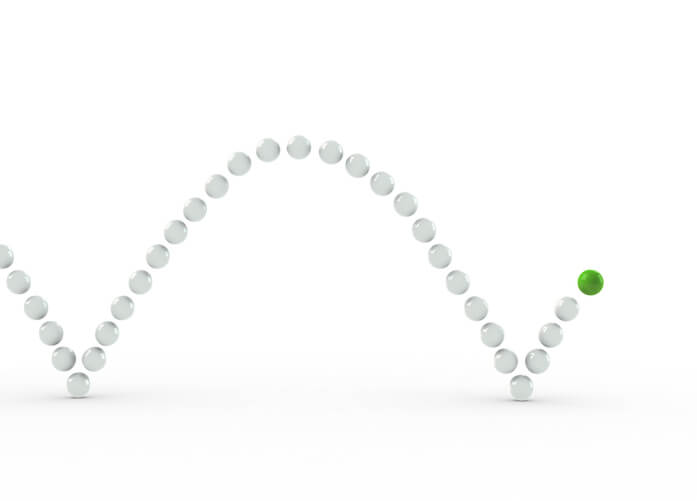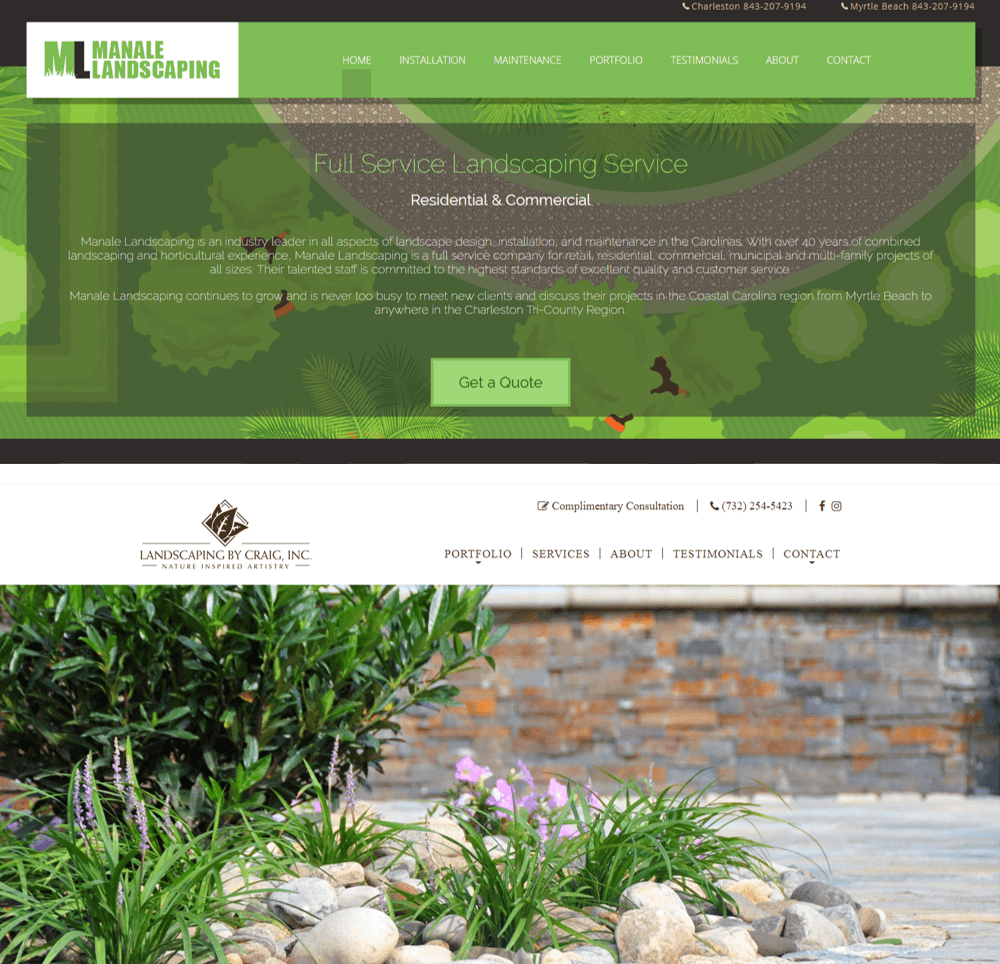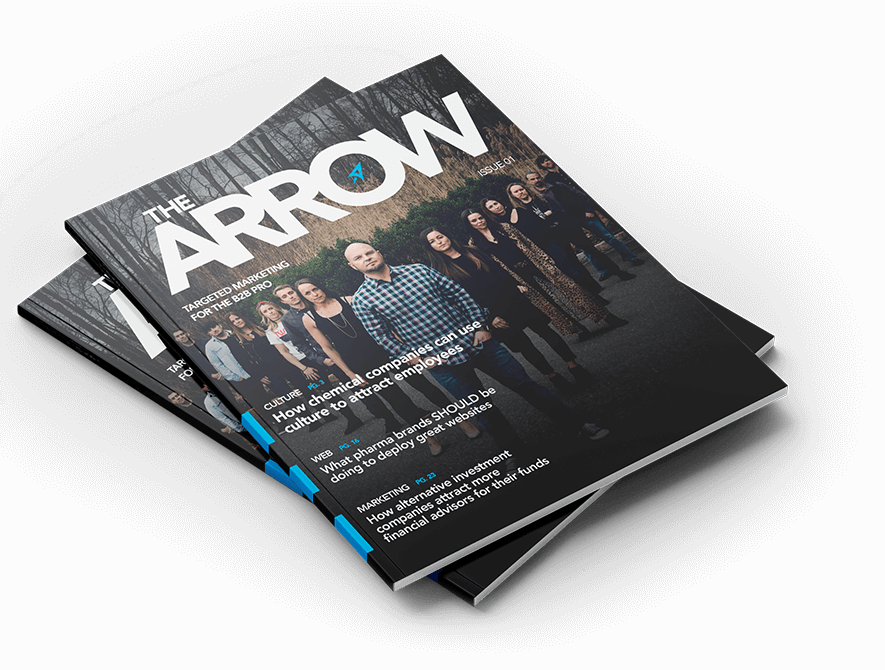Website Redesign – Justifying a New Design to Your Boss
Chris Mulvaney is the CEO of CMDS. I make things... I’m the creative entrepreneur with passion for (re)making brands and inventing solutions to problems no one knows exist.
Many executives fear the words “website redesign.”
They think big dollar signs and major headaches. Instead, senior execs would often prefer to make a few tweaks to the site, possibly throw up an updated landing page and spend their money elsewhere – the “if it’s not broke, don’t fix it” mentality.
This is short term thinking. You can’t put a band-aid on a website and pray it gets you through the next sales cycle.
So, how do you make your boss understand WHY you need a website redesign? And why do you need it NOW?
Consider this:
Just because it’s not broke, doesn’t mean it’s actually working.
Instead of thinking about the expense and effort involved in creating a new website, consider whether your current website is actually hurting your business.
Pitfalls of Using an Outdated Website
- Diminished brand credibility.
- Penalized by search engines like Google and Bing
- Lose customers before you have a chance to entice them
- Discourages innovation and creative marketing and sales opportunities
- Generate less leads than competition
- Makes your company seem small or local
OK! So you know WHY outdated websites are bad for business. Now, let’s establish whether or not you actually need a website redesign.
(If you need help to justifying a website redesign, pay attention to the list below and check off any that apply to your current site.)
Website Redesign Checklist
❐ Are your sales people embarrassed to show your website?

This is a big one. Your website should be your biggest sales tool – the best weapon your sales team has in pitching your company.
If your team is focused on printed marketing materials, slide decks, and other tools just to avoid showing your website, then you have a problem.
If your sales rep is doing a great job pitching your product or service, but a customer visits your website to only see outdated, old and poorly managed content, it will undercut the rep’s efforts.
Customers will think your company is small-time or local. Or even worse, they will assume that your company is not willing to invest in its image. This first impression trickles down into their anticipations of your customer service, product support and quality. This is not the impression your website should be giving.
Your website should be a source of pride.
❐ Is it responsive?
There is probably no bigger reason to redesign your website than this. In 2018, there is no excuse to not have a responsive site.
More than half of all web traffic happens on mobile devices. If your current website is the pinch and zoom variety, you are sabotaging yourself.
Not only do the biggest search engines like Google and Bing severely penalize websites that are not mobile-friendly, but, frankly, your prospective customers won’t waste their time with you.
Unresponsive sites are painful to read on phones. Potential visitors will take one look at your site and leave.
More importantly, mobile is the future. Any delay in publishing a responsive website is purely lost time. This is not a flash in the pan trend, but a fundamental, permanent shift in how your customers will be viewing your site for the future.
❐ Is your website one of the top sites in your industry?
Does your competitor’s website give them a competitive advantage? Is it easier for customers to find information on their site? Do other companies have an easier time getting leads because of their sites’ functionality and appearance?
Take a hard look at your website alongside your competitors and decide whether yours is holding you back and preventing you from competing.
In an industry where websites are a newer, less prominent focus, being a first-mover in web design can offer a lucrative competitive advantage. New technologies can position first-movers to gain more traffic, publish more content, convert more leads and earn more social shares.
❐ Are your web stats good? Page load time? Bounce rate?

Sometimes, it just comes down to the numbers. Items like:
- Bounce rates (above 80% is a problem)
- Page load time (should be below 2 seconds ideally)
- Time on site
- Pages per visit
- SERP ranking (what page you show up on search results)
Google Analytics is your friend here. Spend some time analyzing your website’s performance. Some of this is related to your industry and the type of content on your site. But a significant factor is directly tied to how old your site is and whether it can provide a positive user experience.
Older sites take longer to load – especially if they are not responsive. This results in higher bounce rates (people immediately leaving your site). Poor page load times and bounce rates tell search engines that your site is subpar, causing them to push you lower on results pages. The further down on SERP your site ranks, the less people will ever even know about your site.
It’s a vicious cycle, but luckily one that a website redesign can correct.
❐ Has your brand evolved in scope, image or direction since the current website launched?
Do your in-store / printed materials / emails and digital ads match the look and feel of your website? Oftentimes companies will update their image, color schemes, fonts, etc. and try to shoehorn the new look into the old site.
Replacing a logo is not too hard, but changing the style? It’s next to impossible to retrofit the new look on the old site design. This can cause a disconnect and confuse customers.
Or even more commonly, companies expand their scope, launching a new product line or service offering and are forced to present it ineffectively in the old site architecture.
A site redesign can incorporate all of your offerings, while being built to be flexible enough to accommodate future expansions.
❐ Is your website cumbersome to update?
Marketing tactics have evolved tremendously over the past few years – and continue to grow exponentially. Yet brands operating on outdated websites will be hampered in their ability to implement new and effective strategies.
Older sites just don’t have the backend infrastructure and capabilities necessary to keep up with today’s video-centric, social media-minded, instant gratification consumers.
Your marketing team will be limited in ways that your competition won’t. Everything from lead generation to video production to dynamic advertising will be beyond your abilities.
❐ Does your website generate significant leads?
Newer websites are set up from the start to be conversion machines, focused on driving visitors towards the all-powerful lead.
Your website is the perfect sales funnel for capturing leads – as long as the process is simple and easy to navigate. The more steps it takes and the harder it is for a potential customer to get the information they are looking for, the less chance they have of completing your funnel.
Many older websites simply have a “Contact Us” section on their site, requiring interested visitors to do all the work–and then wait for you to get back to them.
Modern web design removes the onus from the customer. Features such as instant chat, single-field forms, instant downloads, drip marketing and auto-complete functionality make it faster and easier for prospects to get the information they need — and increase your chances of adding a new lead to your sales process.
❐ Do visitors have an easy time finding what they are looking for and navigating the site?

The older a site gets, the clunkier and less logical the site organization becomes. What may have started out as very simple and straightforward navigation, loses its simplicity over time.
As companies add more content, launch new products, update some pages and remove others, getting around the site quickly and easily can become impossible.
Ideally, your site visitor should be able to find what they are looking for in three clicks or less. Anything more than this will frustrate them and send them packing to another, easier to navigate website.
❐ Does your design feel like it is trying to make ‘retro’ cool again?
On a purely aesthetic point-of-view, a website redesign can add a breath of fresh air into your brand. Changing your font choice, adding more white space, cleaning up busy pages and threading a level of consistency across the entire site will go miles in improving your site’s appearance.
Updating stale, passe design trends to a more modern look can make your company seem current, connected and relevant. The last thing you want is for a customer to see your site and instantly think that you are not offering the best quality products and services, simply because your web design is from 5 years ago.
But this happens all too frequently.
Check out these two landscaping companies. Both are local. Both have similar services and portfolio pieces. But which would you call?

The bottom one. And it’s all because of the updated website design.
Honestly, the top website has better content in terms of copy and they have more information. But it doesn’t matter, because it’s so dated. (And it took too long to load so we lost patience and stopped looking at it.)
❐ Was the current website built more than 4 years ago?
The average lifespan of a website is less than 3 years.
Technology is moving that fast. If you think about it, mobile web traffic is currently more than half of all traffic. Five years ago it was 16%. Think about it. In just 5 years, mobile traffic increased by more than 350%.
Could anyone have predicted that? Who knows. But there certainly wasn’t the technology available then to be ready for it.
No one knows where we will be in another 4 years. Technology is changing faster than we can keep up.
Things like Progressive Web Apps, parallax, blockchains, artificial intelligence, motion UI, Google AMP, and a more intense focus on privacy and security will become drivers of new sites in the future. Only some of these things are ready to be incorporated now – and certainly not at the level they will be in a few years time.
Now what?
If you have checked even one of those boxes, it is time to start thinking about a website redesign. If you have checked multiple boxes, your website is likely hurting your business.
Some Pretty Persuasive Facts
- A site with 6 second load time is estimated to lose 24% of visitors.
- 38% of people will stop engaging with a website if the content/layout is unattractive.
- Visitors form an impression of your website in less than 50 MILLISECONDS
- A study found that 94% of negative website feedback was design related
- Retailers lose $2.6 Billion due to slow-loading websites each year
- 75% of website credibility is based on design
Website Evaluation Tools
When making the case for a new website, make sure you know your current stats and performance factors.
- To find your bounce rate, time on site and pages per visit, reference your Google Analytics page (or alternative like Kissmetrics or Piwik.
- Check your page speed here.
- site is responsive here.
- Pick 5-10 examples of something a potential client would be looking for from different areas of your business. Track how many clicks it takes to get to that from your home page.
- Figure out your website conversion rate by looking at how many conversions your website generated last month (if you are not tracking this, you should be) and divide it by your total monthly visitors (found in your analytics tracking software). Then compare it to average conversion rates for your industry in this article.
- Talk to your sales team. Find out how they generally sell and what tools they use. Ask them whether they are using the website as a primary sales tool or a secondary.
Armed with these answers, powerful statistics, plus the checklist from above, you should be prepared to present your case for a website redesign to your boss.
Once you get the greenlight, give CMDS a call. We can walk you through the website design process more thoroughly and make you look like a rockstar with your senior executives. Contact us here or call 732.706.5555.





